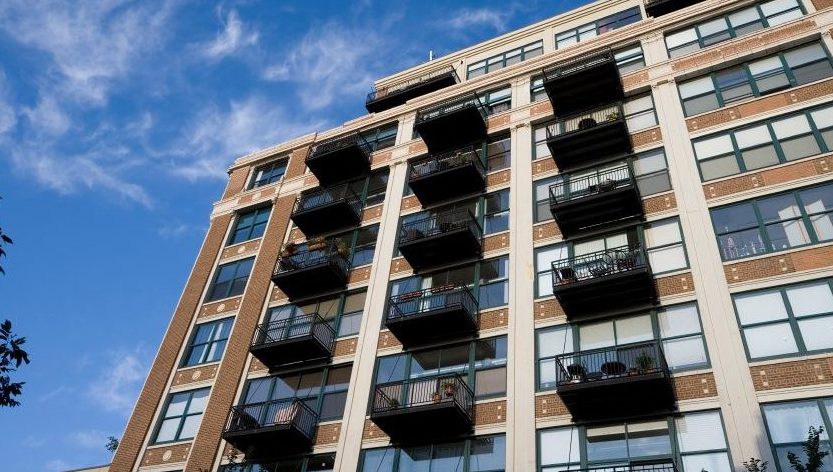Apartment REIT occupancy levels are generally higher than that of the national norm – sometimes by a large margin. But consistent outperformance isn’t present to the same degree on the rent growth side of the revenue equation.
This cycle in particular, the seven major apartment REITs tracked by RealPage, Inc. have averaged an occupancy premium of 113 basis points (bps) over that of the national as a whole. In the peak leasing season of 2018, the national average did make up some ground on REIT occupancy levels, tightening to 30 bps at its narrowest mark. The most recent figures from March 2019, however, have REIT occupancy levels holding at 96.2% – about 90 bps stronger than the market overall.

This higher occupancy rate for the REITs versus the overall national norm is not necessarily a surprising phenomenon. First, REITs have historically focused on maintaining an occupancy premium. This can be seen when looking at the relative lack of seasonal swings on occupancy levels. The 2018 peak-to-trough occupancy swing for the REITs was a mere 40 bps, compared to the US seeing a peak to trough swing of about 90 bps.
A second reason REITs have been able to maintain an occupancy premium is the nature of the markets in which REIT properties are concentrated. Most of the major REIT markets – especially those on either of the coasts – are naturally low-vacancy markets where housing is undersupplied. As such, it’s apparent that there is a tendency for occupancy figures to trend a bit higher than what is generally found in the nation’s interior markets.
With regards to annual rent growth performance, the REITs have generally topped the national average for the majority of this cycle. But in contrast to occupancy rates, changes in rent growth have seen some back-and-forth momentum.
Of the 111 months since the current real estate cycle began in January 2010, monthly annualized rent growth figures for REITs have surpassed the national figure 67 total times, roughly 60% of the time. Most of the months in which the REITs lagged national performance came in 2016 and 2017, with REITs lagging for all 24 months during that period. Underperformance continued in the first half of 2018, resulting in 30 straight months that REIT rent growth lagged the national average.
But the underperformance trend ended in mid-2018, and by year end, REIT rent growth had began to separate from the national norm. The most recent figures from March 2019 show annualized REIT rent growth at 3.4% to the US average of 3.2%.

Simply asked, what caused (or at least helped drive) that rebounding REIT rent growth figure during a period in which the national number was also improving? One key driver is related to supply figures. This is true in regard to both national and REIT performance.
Focusing on overall national performance first, U.S. completion volumes in 2018 were down 7.8% from the 2017 volume. That allowed both rent growth and occupancy to gain some momentum last year.

But the supply slowdown was even greater – 13.4% – in markets where REIT-owned product is concentrated. About 37% of all REIT units across the nation are owned in the five largest U.S. markets alone. Extending that list to the 10 largest markets accounts for almost 57% of all REIT units. And almost three-quarters of all REIT units in the nation are located in just 15 markets, which also happen to be some of the most active markets this cycle in terms of construction activity.


In any given year since 2010, about 40% of all units completed have been located in these major REIT markets. However, the total share dropped from 2017 to 2018. Further, at just 39.5%, 2018 was the lowest share of units delivered in the major REIT markets since the early-cycle years.
While the overall number of units completed in 2018 was still fairly robust, both the decreasing volume and the decreasing share of deliveries in these major REIT markets allowed for some stronger REIT performance throughout the past year. Interestingly, the stretch of underperformance in 2016 and 2017 also coincides with the two years in which U.S. supply peaked, and REIT markets grabbed more than 42% of that new supply in those years.
Looking ahead, the expectation is that 2019 will see annual completions land around 320,000 units, a bump of about 15% year-over-year. Considering that uptick in supply, it is plausible that overall performance will be slightly softer than 2018 rent growth and occupancy figures. In terms of REIT performance, there may also be a slight reversion closer to the national norm as the year continues. About 44.5% of all scheduled 2019 completions are expected in the top 15 REIT markets along.
All considered however, performance at both the national level and the REIT aggregate level should be in good shape for the remainder of 2019.







